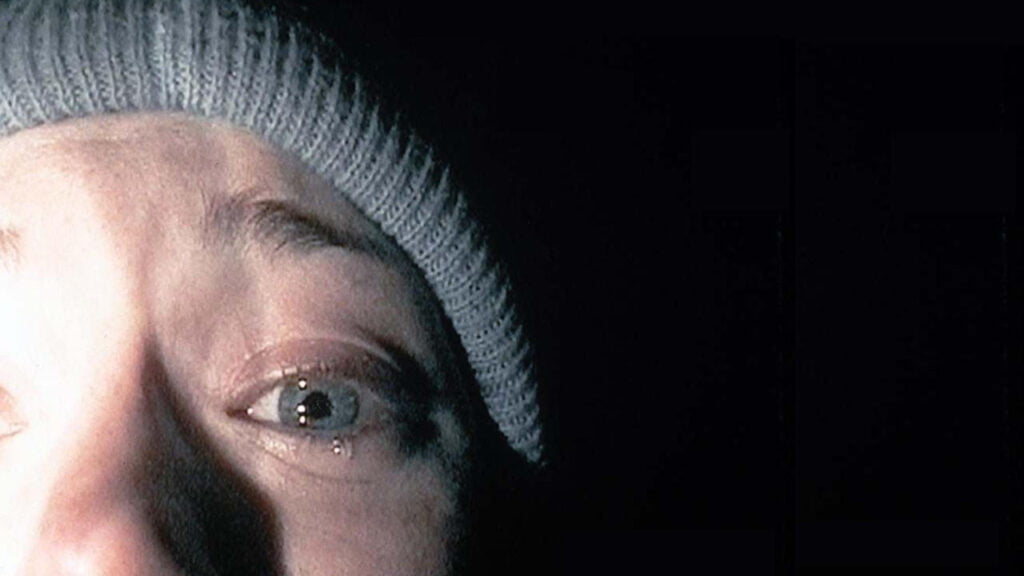As an adolescent growing up in a rural area of Putnam County, New York, I would often lead my friends and family on woodland expeditions in search of spooky happenings. Whether it be a sweltering summer or a quiet snow day, we would go exploring. Popular spots included the broken-down car several acres behind our house, the quaint boulder-lined babbling brook, and, most importantly, the circular stone structures underneath a giant tree just a few acres from our front door. Though some friends have doubted me, this structure was in place when my family first moved into our house, and the geometric pattern of the stones excited me. Was it the work of local teenagers trying to freak out anyone who found the stones, or, were the stones placed there centuries ago for sinister reasons? I didn’t care. I was thrilled regardless because they reminded me of one of my favorite movies: The Blair Witch Project.
Like other semi-elder millennials, I learned of The Blair Witch Project’s existence from the movie Juno (2007), when Paulie scolds Juno for excusing their sexual encounter as something she initiated because she was bored, despite The Blair Witch Project airing later that day. After seeing Juno in theaters (twice), I watched The Blair Witch Project for the first time. I was totally taken by the characters and the eerie location, which, to me, felt very similar to my backyard. This is why The Blair Witch Project cemented itself in my psyche, and I’ve been nervous and thrilled by the woods ever since.
While at the State University of New York at New Paltz, coincidentally the same college attended by actor Michael C. Williams who plays Mikey, my professor John Palencsar stressed the significance of the wilderness to the social formation of the United States of America. Puritan settlers were terrified by the existence of the woods. The new woods of the Americas were uncharted by British settlers and represented opportunity and discovery for those brave souls who dare venture. However, the earliest Puritan settlers, once they learned of the existence of indigenous people who looked quite different from themselves and were therefore deemed wicked, viewed the woods as ungodly, and one could be punished for entering. Stories of “satanic magic” and kidnapping from indigenous people frightened most Puritans, and they associated the woods with the Devil himself. If you lived too far away from a church or moved to the frontier to escape religious conformity, deaths that occurred in your life were supposedly punishment by God for straying from the faith. This did not stop some Puritans from venturing into the woods despite knowing nothing about the new land. Unfortunately, many did not survive their journeys, much like the three documentary filmmakers of The Blair Witch Project.
The filmmakers, who knew nothing about the woods they were entering beyond the map (which swiftly becomes useless), were punished for their lack of knowledge and arrogance. When they happened upon several stone piles, Josh knocks one over, unleashing a cascade of horrors upon the group. These stones were referenced by Mary Brown, the wacky Burkittsville resident who claimed to have seen the Blair Witch. The stones directly related to a Bible verse, to which Heather paid no attention because she thought Brown was “a fucking lunatic.” Ignoring the religious roots of the area, the filmmakers effectively signed on for God’s punishment. Despite being prepared for the harshness of a New England autumn in the wilderness, they were ignorant – they did not heed the advice of the locals who swore by the legend of the Blair Witch and went into the woods anyway for the sake of their college documentary. They got lost after one day.
In the July 1999 Seattle publication The Stranger, film reviewer Charles Mudede describes the allure of The Blair Witch Project for folks like me: “Panic is exactly what the stunning, extremely unsettling new film The Blair Witch Project is all about – panic charged by fear of the unseen, of unreason; the monster lurking behind the trees, the spirits among the leaves, the dead under the stones, the souls in the river.” Nature is at the forefront of The Blair Witch Project, though the lingering fear of God’s punishment lies just under the surface. Mary Brown, clutching her Bible and speaking to deaf ears, warned of the stone piles. Genesis 31:52 states, “They stand between us as witnesses of our vows. I will never pass this pile of stones to harm you, and you must never pass these stones or this monument to harm me.” The arrogant filmmakers desecrated the piles, went beyond their boundaries, and God smote them. Later in the film, Heather films a dead rat on the ground, “What killed this dead mouse? Witchcraft?” “How ‘bout God,” asserts Josh. When I found the rock formation in my backyard, you better believe I refused to touch it, even though I am agnostic. Just as the townsperson proclaimed in her interview when asked if she believed the legend of the Blair Witch, “I am afraid enough not to go up there.”
